
The Bridge of Freedom: A Symbol of Hope and Unity
Explore the Bridge of Freedom in Paju-si, South Korea – a historic landmark symbolizing peace, unity, and stunning natural beauty.
The Bridge of Freedom in Paju-si, South Korea, is a poignant landmark that encapsulates the spirit of peace and reconciliation. This remarkable bridge offers visitors breathtaking views and a rich historical context, making it a must-visit for anyone exploring the area.
A brief summary to Bridge of Freedom
- 1400-6 Majeong-ri, Munsan-eup, Paju-si, Gyeonggi-do, KR
- +8231-940-5831
- Visit website
- Monday 12 am-12 am
- Tuesday 12 am-12 am
- Wednesday 12 am-12 am
- Thursday 12 am-12 am
- Friday 12 am-12 am
- Saturday 12 am-12 am
- Sunday 12 am-12 am
Local tips
- Visit during the early morning or late afternoon for the best lighting for photography.
- Take time to read the informational displays to fully appreciate its historical significance.
- Enjoy a leisurely walk along the nearby paths to soak in the beautiful scenery.
- Consider visiting the bridge on weekdays to avoid crowds.
Getting There
-
Subway
From any location in Seoul, make your way to a subway station and take Line 1 (the Blue Line). If you're starting at Seoul Station, board the train heading towards Seodongtan Station. Transfer at the last stop, which is the Guro Station. From Guro Station, transfer to Line 7 (the Olive Green Line) heading towards Bupyeong-gu Office Station. Get off at the Munsan Station.
-
Bus
After arriving at Munsan Station, exit the station and head to the nearest bus stop. Take Bus 20 or Bus 3500, which will take you towards the Paju area. Ask the bus driver or confirm with locals to ensure you're on the right bus. Get off at the stop closest to Majeong-ri.
-
Walking
Once you get off the bus near Majeong-ri, follow the signs or ask locals for directions to the Bridge of Freedom. It’s located at 1400-6 Majeong-ri, Munsan-eup, Paju-si, Gyeonggi-do. The bridge is a well-known landmark, so you can usually find your way by simply following the crowd or any directional signs.
Discover more about Bridge of Freedom
Iconic landmarks you can’t miss
Dorasan Station
2.7 km
Explore Dorasan Station, a poignant symbol of peace and hope on the Korean Peninsula, offering insights into Korea's past and aspirations for reunification.
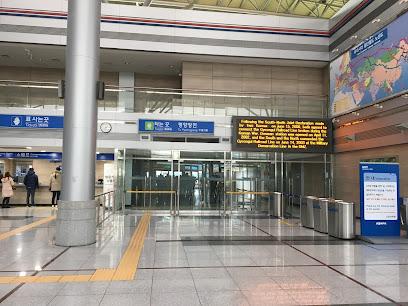
Museum of Modern History of Korea
11.7 km
Explore Korea's dynamic journey through modern history at the Museum of Modern History of Korea, a captivating tourist attraction in Paju-si.
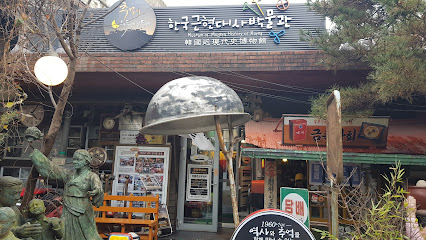
Yeoncheon Horogoru Ruins
15.0 km
Explore the Yeoncheon Horogoru Ruins - a historical gem in Gyeonggi-do showcasing Korea's rich heritage amidst stunning natural beauty.
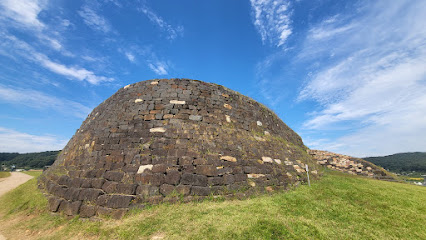
Gongneung (Tomb of Queen Jangsun of King Yejong)
17.9 km
Discover the serene beauty and historical significance of Gongneung, the tomb of Queen Jangsun, a premier destination in Gyeonggi-do for heritage enthusiasts.
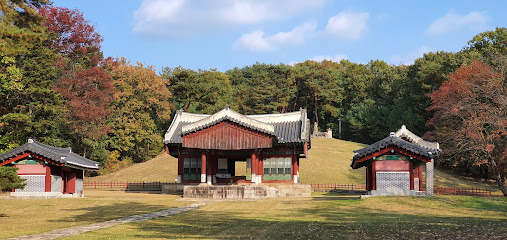
Soryeongwon (Tomb of Royal Noble Consort Suk of the Haeju Choe Clan)
19.0 km
Explore the serene beauty of Soryeongwon, the resting place of Royal Noble Consort Suk, rich in history and natural elegance.

Ilyeong Tourist Site
27.6 km
Discover the serene beauty and cultural heritage at Ilyeong Tourist Site in Yangju-si, a perfect getaway for nature lovers and cultural enthusiasts.

Yeoncheon jeongokri ruins
31.5 km
Explore the Yeoncheon Jeongokri Ruins, a historical gem in Gyeonggi-do, South Korea, where ancient artifacts and serene landscapes await.
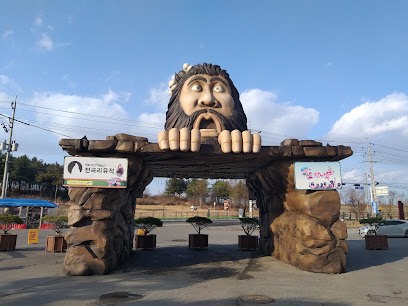
Dongjangdae
34.8 km
Experience Korea's rich heritage at Dongjangdae, a historical site in Seoul offering breathtaking views and a peaceful atmosphere.

Jeondeungsa Temple
36.4 km
Explore the serene Jeondeungsa Temple in Ganghwa-gun - a historical Buddhist site filled with beauty, culture, and tranquility.

인천녹청자도요지
37.2 km
Explore Incheon Gwangyeoksi, a historical landmark that encapsulates South Korea's rich heritage and cultural significance in a serene setting.
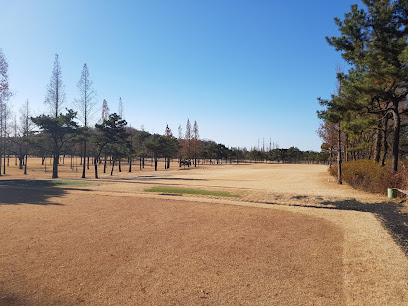
Hongjimun Gate and Tangchundaeseong Fortress
37.6 km
Explore the historic Hongjimun Gate and Tangchundaeseong Fortress in Seoul, a captivating blend of architecture and history set in serene surroundings.

Bukhansan National Park
37.7 km
Explore the scenic beauty and rich biodiversity of Bukhansan National Park, a breathtaking natural haven near Seoul, perfect for hiking and outdoor adventures.

부평도호부관아
38.7 km
Discover the historical charm of Gyesan-dong in Incheon, where culture, architecture, and local flavors come together to create an unforgettable experience.

Jeongseojin
38.9 km
Discover the breathtaking beauty and cultural heritage of Jeongseojin, a top tourist attraction in Incheon, perfect for nature lovers and explorers.
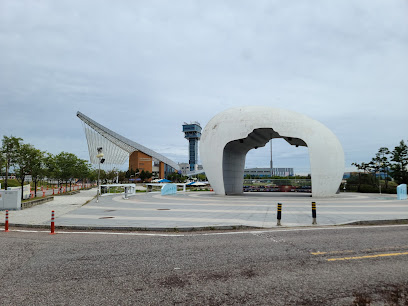
Samcheonggak
39.0 km
Explore the essence of Korean culture at Samcheonggak, a captivating cultural center in Seoul offering art, tradition, and exquisite dining.

Unmissable attractions to see
Steam Locomotive at Jangdan Station of the Gyeongui Line
0.0 km
Explore Korea's railway history at the enchanting Steam Locomotive exhibit in Jangdan Station, Gyeonggi-do.

Freedom Bridge
0.1 km
Explore the historical significance and scenic beauty of Freedom Bridge, a symbol of peace on the Korean Peninsula.

Mangbaedan
0.1 km
Explore the serene Mangbaedan Memorial Park, a historical tribute nestled in Gyeonggi-do, perfect for reflection and relaxation amidst nature's beauty.

Imjingak
0.1 km
Experience the historical significance and natural beauty of Imjingak, a key tourist attraction near the DMZ in South Korea.

DMZ생생누리 DMZLIVE
0.1 km
Discover the history and significance of the Korean Demilitarized Zone at DMZLIVE, an engaging exhibit perfect for curious travelers and history enthusiasts.

Imjingak Tourist Information Center
0.2 km
Discover the Imjingak Tourist Information Center, your gateway to the historical wonders of Korea's Demilitarized Zone and rich cultural heritage.

Paju Imjingak Peace Gondola (DMZ Gondola)
0.2 km
Explore the Paju Imjingak Peace Gondola for breathtaking views and a profound connection to the history of the Korean DMZ.

Imjingak Pyeonghwa Nuri Park
0.5 km
Explore the serene beauty and poignant history of Imjingak Pyeonghwa Nuri Park, a unique destination in South Korea's Gyeonggi-do region.

Imjingang Railway Bridge
0.5 km
Experience the Imjingang Railway Bridge, a symbol of unity and resilience with breathtaking views and rich historical significance.

DMZ생태관광지원센터
0.6 km
Explore the DMZ Ecological Tourism Support Center, where history meets nature in a unique cultural experience in South Korea’s iconic DMZ.

Panmunjom Tour Information Center
0.6 km
Discover the history and significance of the Korean Demilitarized Zone at the Panmunjom Tour Information Center.

Imjingak Pyeonghwa Nuri Campsite
1.0 km
Discover the natural beauty and historical significance of Imjingak Pyeonghwa Nuri Campsite, a unique camping experience near Korea's DMZ.

Unification Bridge
1.5 km
Explore the Unification Bridge, a pivotal symbol of hope and connection on the Korean Peninsula, offering breathtaking views and rich history.

Dora Observatory
3.7 km
Experience the breathtaking views and poignant history at Dora Observatory, the gateway to the Demilitarized Zone.

Mt. Dora Observatory
3.7 km
Discover the beauty of the universe at Mt. Dora Observatory, a premier destination for stargazing in the serene landscapes of Paju-si, Gyeonggi-do.

Essential places to dine
Rural dining table restaurant
11.9 km
Experience authentic Korean cuisine in a tranquil rural setting at the Rural Dining Table Restaurant in Gyeonggi-do.

Royal India
25.5 km
Discover authentic Indian flavors at Royal India in Goyang-si – where every dish tells a story.

Restaurant
37.6 km
Discover exquisite Korean flavors at one of Seoul's top restaurants, blending tradition with innovation for an unforgettable dining experience.

Grain Seoul
39.6 km
Discover exceptional brunch delights at Grain Seoul - where modern cuisine meets cozy vibes in the heart of Seodaemun-gu.

Hangong-Gan
39.9 km
Experience exquisite Asian Fusion cuisine in the heart of Mapo-gu at Hangong-Gan – where tradition meets innovation.

PKM Garden Restaurant & Cafe
40.1 km
Experience the essence of Italy in Seoul at PKM Garden Restaurant & Cafe - where delightful flavors meet serene surroundings.

질할브로스 홍대점 (Jilhal Bros Hongdae)
40.3 km
Discover authentic American cuisine at Jilhal Bros in Hongdae – where comfort food meets vibrant city life.

Pie Republic Korea
40.3 km
Discover authentic South African gourmet pies at Pie Republic Korea - a unique culinary gem in Seoul's vibrant Mapo-gu district.

The Restaurant
40.4 km
Experience the perfect fusion of Haute French and Italian cuisine at The Restaurant in Seoul's Jongno District.

Sejong Village Food Street
40.4 km
Discover the rich flavors of Korea at Sejong Village Food Street – a culinary haven in the heart of Seoul's historic Jongno District.

James Cheese
40.5 km
Discover the mouthwatering delights of James Cheese in Mapo-gu, where authentic Korean ribs meet vibrant dining culture.

Myth Jokbal Hongdae
40.6 km
Discover the authentic taste of Korea at Myth Jokbal in Hongdae—famous for its flavorful pig's trotters and vibrant dining atmosphere.

홍대 맛집 홍대IN파스타 | Hongdae Restaurant HongdaeINPasta
40.7 km
Discover authentic Italian cuisine at HongdaeINPasta, where every dish tells a story amidst the vibrant atmosphere of Seoul's Hongdae district.
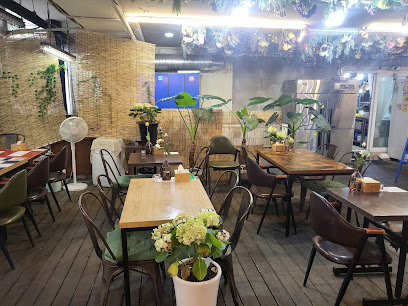
Hongdae Pasta Restaurant Tezkuri
40.7 km
Experience authentic Italian cuisine at Hongdae Pasta Restaurant Tezkuri—where every dish tells a story amidst Seoul's vibrant culture.

Thedam
40.7 km
Discover authentic Korean traditional cuisine at Thedam in Mapo-gu, Seoul – where every dish tells a story.

Markets, malls and hidden boutiques
Paju Premium Outlets
13.9 km
Discover unbeatable deals and a diverse shopping experience at Paju Premium Outlets, the ultimate destination for fashion enthusiasts in South Korea.

Lavec 라베끄 - Souvenir Gift Shop Online from Korea 한국전통기념품 오르골
24.5 km
Explore Lavec, the ultimate destination for traditional Korean souvenirs and unique gifts in Goyang-si, capturing the essence of Korea.

The Town Mall
25.4 km
Discover a world of shopping and dining at The Town Mall in Goyang-si, where every visit is a new adventure in retail therapy.

Starfield Goyang
30.3 km
Discover the ultimate shopping and entertainment experience at Starfield Goyang, where shopping meets culture in South Korea.

COS
30.3 km
Discover sustainable fashion and modern design at COS in Goyang-si, a premier clothing store for style-savvy tourists.

IKEA Goyang
30.9 km
Discover IKEA Goyang: where modern design meets affordability in a stunning shopping experience in Goyang-si, South Korea.

Hyundai Premium Outlets Gimpo
32.6 km
Discover unbeatable shopping deals and delightful dining at Hyundai Premium Outlets Gimpo, your ultimate shopping destination in South Korea.

MSK SHOP / Cafe Coin (Manado disk Shop)
40.0 km
Explore the essence of Korean fashion at MSK SHOP / Cafe Coin, where unique styles and exceptional quality meet in the heart of Seoul.

Common Unique
40.2 km
Explore Common Unique, Seoul's trendsetting women's clothing store, offering fashion-forward apparel, chic accessories, and a unique shopping experience.
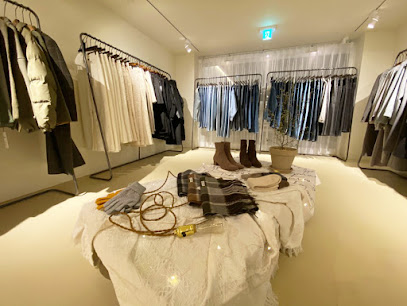
놀다가게 홍대EXIT점
40.4 km
Explore the artistic heart of Seoul at 놀다가게 홍대EXIT점, where unique gifts and local crafts await every visitor.

AK PLAZA Hongdae
40.4 km
Explore AK PLAZA Hongdae: A vibrant shopping mall in Seoul with trendy stores, delicious dining, and a lively atmosphere for all visitors.
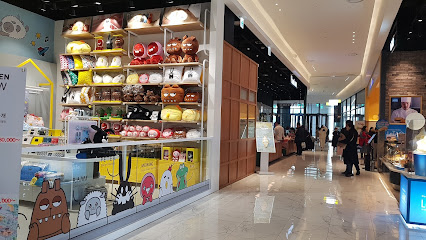
Butter
40.4 km
Discover Butter in Hongdae, Seoul - a stylish home goods store featuring unique decor and gifts that reflect the vibrant Korean culture.

Kakao Friends Hongdae Flagship Store
40.5 km
Explore the colorful world of Kakao Friends at the flagship store in Hongdae, Seoul, featuring unique merchandise and unforgettable experiences.

Mecenatpolis
40.7 km
Explore the dynamic shopping and dining experience at Mecenatpolis, a modern mall in Seoul's vibrant Mapo-gu district.

Å LAND Hongdae
40.7 km
Explore trendy fashion and lifestyle products at Å LAND Hongdae, a spacious clothing store in the heart of Seoul's vibrant Hongdae district.

Essential bars & hidden hideouts
skull pub
25.4 km
Discover the vibrant Skull Pub in Goyang-si, where unique decor meets lively nightlife and a diverse drink selection.

DRUNK PUB
32.0 km
Discover the vibrant nightlife of Gimpo-si at DRUNK PUB, a lively bar offering local drinks and a friendly atmosphere.

Bar Pomme
40.1 km
Discover the exquisite cocktails and vibrant atmosphere at Bar Pomme, a must-visit cocktail bar in Seoul's Jongno District.

Bar Cham
40.1 km
Experience the art of mixology at Bar Cham, a cozy cocktail bar in Seoul's Jongno District, offering unique drinks and a warm ambiance.

LUCKY STRIKE
40.3 km
Experience the vibrant nightlife of Seoul at Lucky Strike – your go-to destination for great drinks, live music, and unforgettable memories.

Cobbler
40.5 km
Experience the art of mixology at Cobbler, a premier cocktail bar in Seoul's Jongno District, where creativity and flavor intertwine.

Tender Bar
40.5 km
Experience Seoul's nightlife at Tender Bar, a cocktail haven offering expertly crafted drinks and a vibrant atmosphere in Jongno District.

Little Big
40.6 km
Discover Little Big, Seoul's vibrant cocktail bar, where innovative drinks and a lively atmosphere await in Mapo-gu.
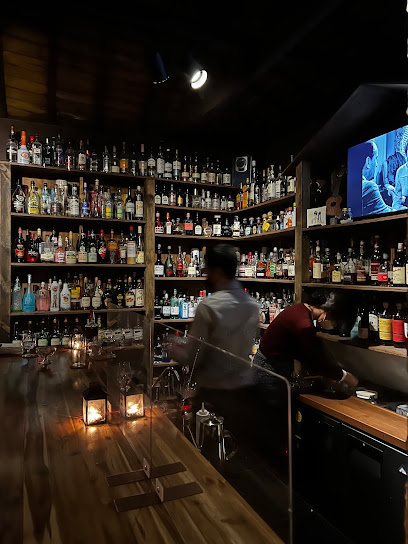
Bar Old-fashioned
40.7 km
Discover the classic charm of Bar Old-fashioned, a cocktail bar in Seoul’s Mapo-gu offering expertly crafted drinks and a cozy atmosphere.

Mike's Cabin
40.8 km
Discover the charm of Mike's Cabin, a cozy bar in Mapo-gu, Seoul, offering a unique blend of local brews and friendly vibes for an unforgettable night out.

Playground Rooftop Cafe & Bar - Hongdae
40.9 km
Discover the vibrant atmosphere and stunning views at Playground Rooftop Cafe & Bar in Hongdae, Seoul's hotspot for nightlife and relaxation.

코키펍 홍대직영점
40.9 km
Discover the bustling atmosphere of 코키펍 홍대직영점, Seoul's lively gastropub offering delicious food, drinks, and fun dart games in the heart of Hongdae.

Thursday Party
40.9 km
Discover the lively nightlife of Seoul at Thursday Party, a vibrant bar in Mapo-gu offering great drinks and an unforgettable atmosphere.

Joons
40.9 km
Experience the vibrant nightlife of Hongdae at Joons, where creative cocktails and a lively atmosphere await.

Corner Pub
41.0 km
Discover Corner Pub, the ultimate nightlife destination in Hongdae, Seoul, where vibrant atmosphere and diverse drinks await you.




